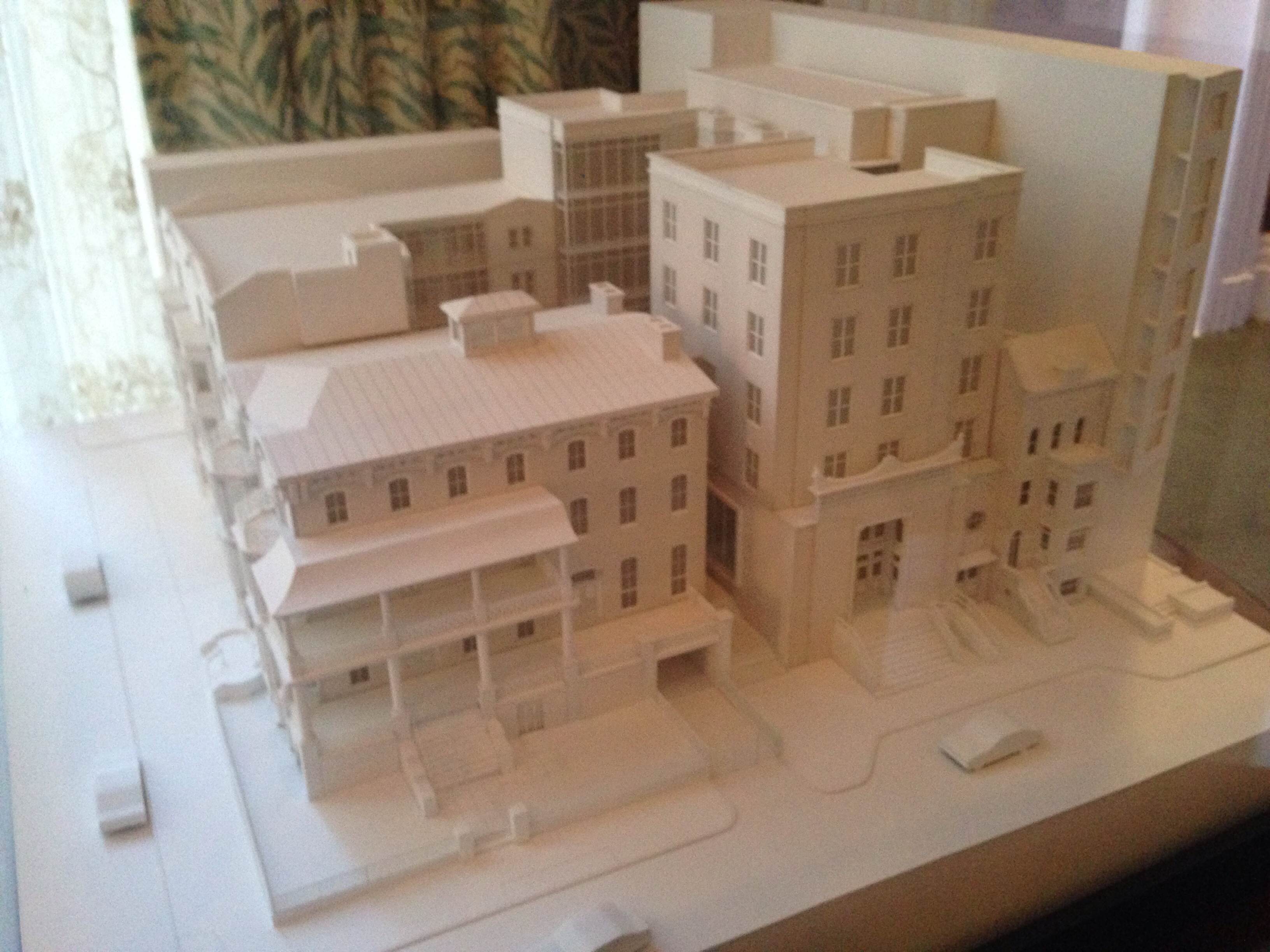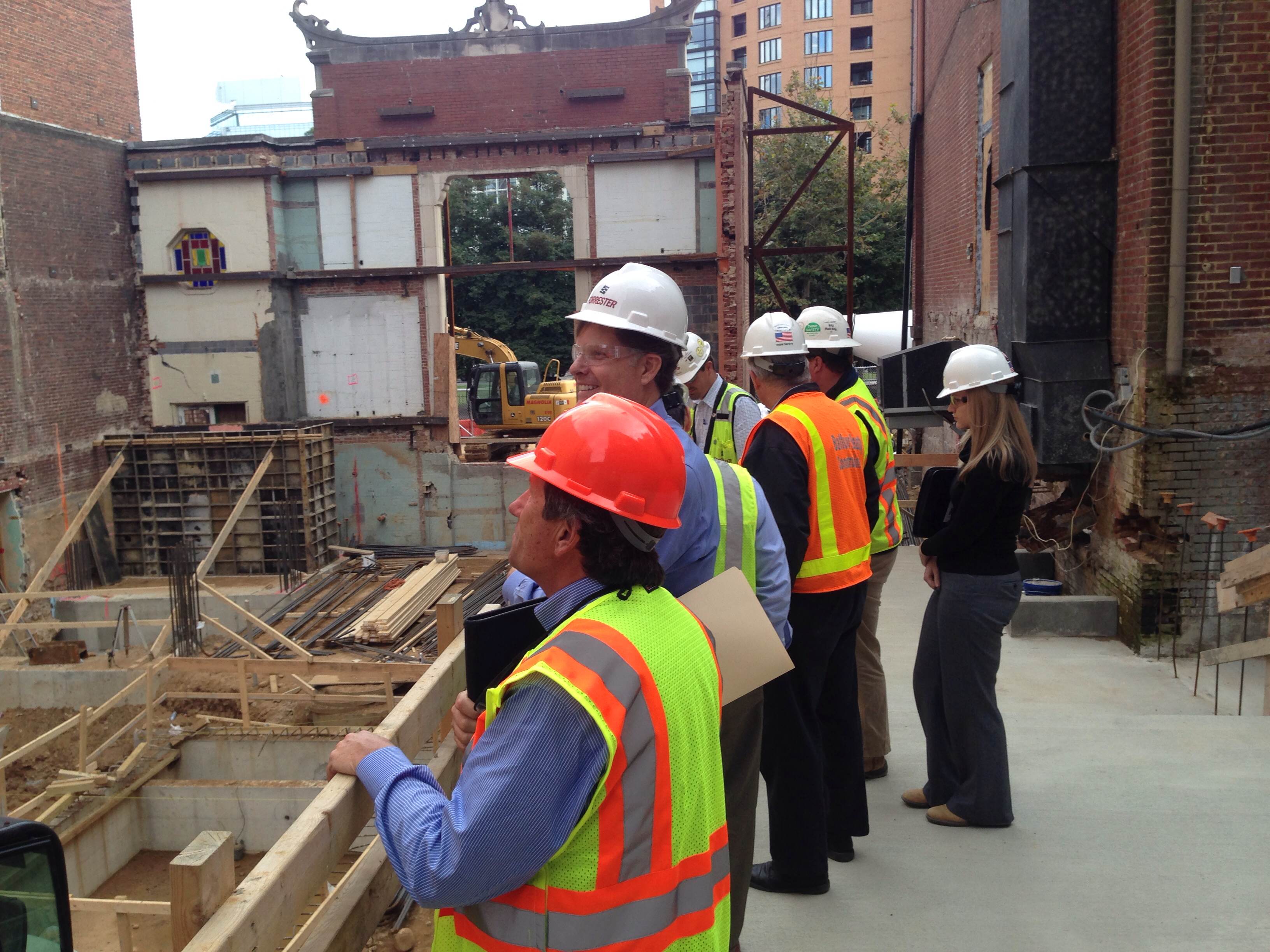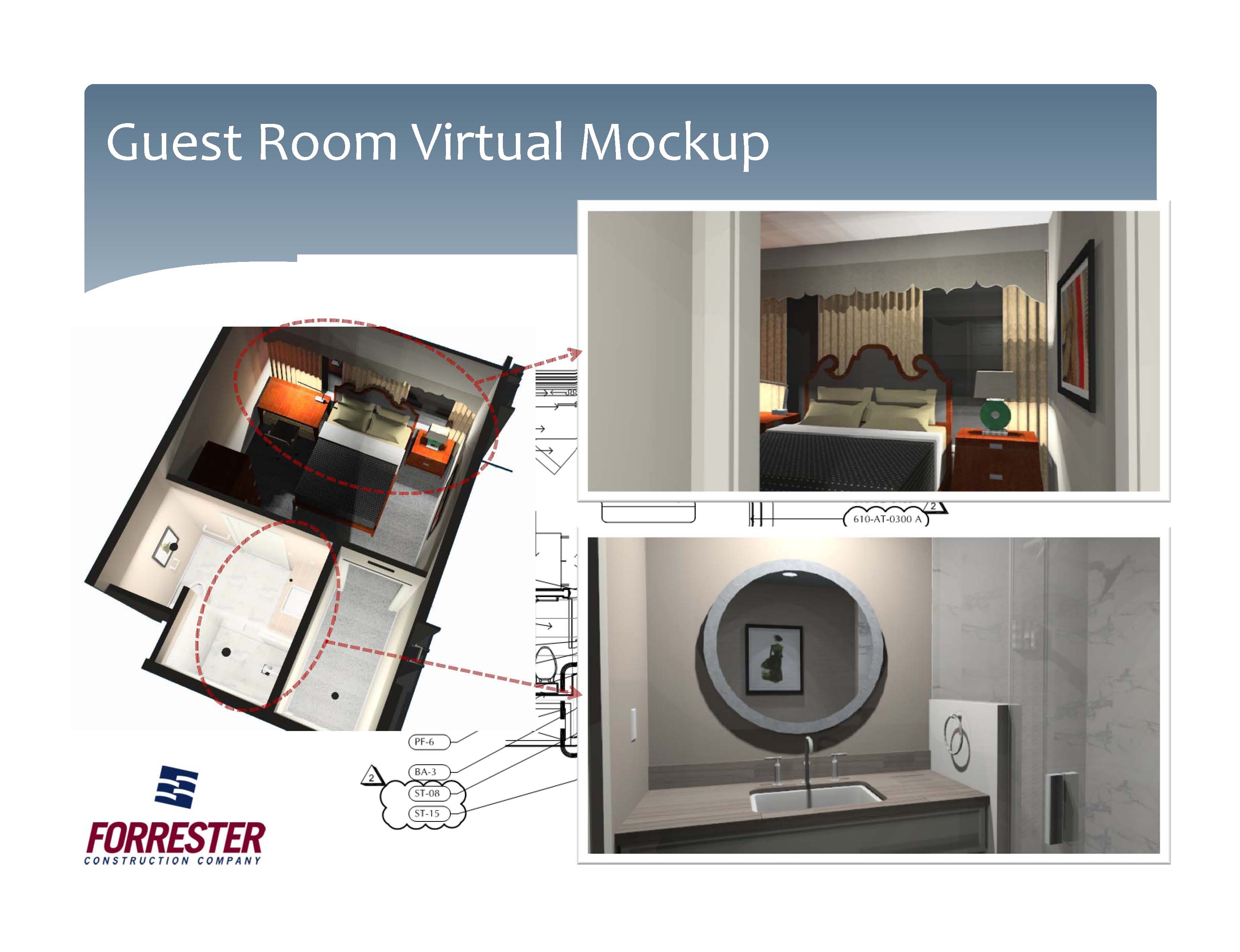Washington, DC – In the construction trade, some 90% of a project manager’s job involves the daily exchange of hundreds of decisions. Perhaps no project better reflects that reality than Morrison-Clark Inn renovation, a Forrester Construction Company project on the corner of L and 11th Streets, NW in the District. Thanks to arrangements by WBC member and Forrester Sr. Procurement Manager Erin Meitzler, the WBC Regional Development Committee toured this project on October 22.
 What a renovation/infill project! Gone are the days of straightforward “greenfield” projects. With construction today, the word “green” is more readily associated with environmental and energy sensitivity than expanses of undeveloped real estate. The Morrison-Clark Inn expansion, started in February 2013, involves a 56-room, 43,000 square foot addition to the Victorian era hotel. The renovation is valued at approximately $14 million. The project team includes owner RB Properties, Inc., core and shell architect Architecture Incorporated, and interior architect Forest Perkins.
What a renovation/infill project! Gone are the days of straightforward “greenfield” projects. With construction today, the word “green” is more readily associated with environmental and energy sensitivity than expanses of undeveloped real estate. The Morrison-Clark Inn expansion, started in February 2013, involves a 56-room, 43,000 square foot addition to the Victorian era hotel. The renovation is valued at approximately $14 million. The project team includes owner RB Properties, Inc., core and shell architect Architecture Incorporated, and interior architect Forest Perkins.
The hotel, originally built 1864 and listed on the National Register of Historic Places, will be expanded to incorporate three adjacent parcels: a 1700s carriage house, the facade of a church, and an 1880s rectory. If that doesn’t sound challenging enough, add underground parking, tight urban spaces, immediately adjacent condominium neighbors, and on-going operations for guests at the Inn! Impressed yet? If not, there is more: A June 2014 deadline, a strict budget, value engineering, and redesign during construction that mimics a design-build effort.
Project manager Paul Grossman and project superintendent Aaron Allen described the importance of excellent face-to-face communications between the owner, architects and engineers as the project took on design-build characteristics. A key component underlying many of the challenges was a shift from concrete construction to steel construction – requiring redesign on the fly. As a result of value engineering, the project shifted from concrete to steel. The team worked to coordinate changes to details and specifications, and minimize impact to architecturally important elements like floor heights. To facilitate such redesign, Forrester employed in-house building information modeling (BIM), which originally wasn’t envisioned for the project. Other challenges included asbestos and lead mitigation, archaeological surveying, total redesign of the church facade bracing from interior to exterior, and minimal site access requiring difficult crane logistics and old-fashioned wheelbarrow delivery. During the site tour, WBC members saw how historic fireplaces and stairway treatments were preserved, and how extensive underpinning and shoring were integral to delivery of the project.
component underlying many of the challenges was a shift from concrete construction to steel construction – requiring redesign on the fly. As a result of value engineering, the project shifted from concrete to steel. The team worked to coordinate changes to details and specifications, and minimize impact to architecturally important elements like floor heights. To facilitate such redesign, Forrester employed in-house building information modeling (BIM), which originally wasn’t envisioned for the project. Other challenges included asbestos and lead mitigation, archaeological surveying, total redesign of the church facade bracing from interior to exterior, and minimal site access requiring difficult crane logistics and old-fashioned wheelbarrow delivery. During the site tour, WBC members saw how historic fireplaces and stairway treatments were preserved, and how extensive underpinning and shoring were integral to delivery of the project.

When asked at the tour end if he enjoyed the challenges and excitement of such an infill project, project manager Paul Grossman paused for a second and responded, “Think I would rather my next project be a big box on a greenfield.” Good luck finding such a project in the Washington market!
About the Author
 Rob Klein
Rob Klein
With over 30 years experience in project management, Klein Consulting facilitates redevelopment and entitlements through analysis and outreach. 240-848-4951
###
